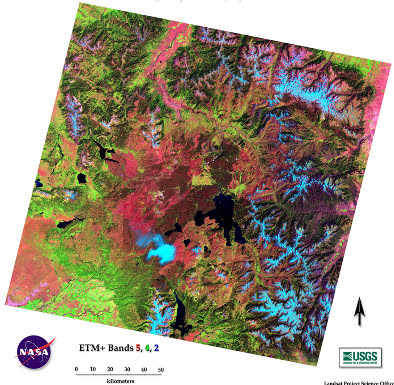
Super-eruptions are not the only type of eruption to be considered when evaluating hazards at volcanoes with protracted eruption histories, such as the Yellowstone (Wyoming), Long Valley (California), and Valles (New Mexico) calderas. There have been more than 23 effusive eruptions of rhyolite lava at Yellowstone since the last caldera-forming eruption ~640,000 years ago, all of similar or greater magnitude than the largest volcanic eruptions of the 20th century.
This study by Christy B. Till and colleagues is innovative because it is the first to use NanoSIMS ion probe measurements to document very sharp concentration gradients over very short distances in igneous minerals, which allow a calculation of the timescale between reheating and eruption for the magma body of interest.
Their results suggest that an eruption at the beginning of Yellowstone’s most recent volcanic cycle was triggered within 10 months after reheating of a mostly crystallized magma reservoir following a 220,000-year period of volcanic quiescence. A similarly energetic reheating of Yellowstone’s current subsurface magma bodies could end ~70,000 years of volcanic repose and lead to a future eruption over similar timescales. Fortunately, write the authors, any significant reheating event is likely to be identifiable by geophysical monitoring.
Reference:
Months between rejuvenation and volcanic eruption at Yellowstone caldera, Wyoming
Christy B. Till et al., Arizona State University, Tempe, Arizona 85287, USA. Published online ahead of print on 1 July 2015; DOI: 10.1130/G36862.1
Note: The above post is reprinted from materials provided by Geological Society of America.









